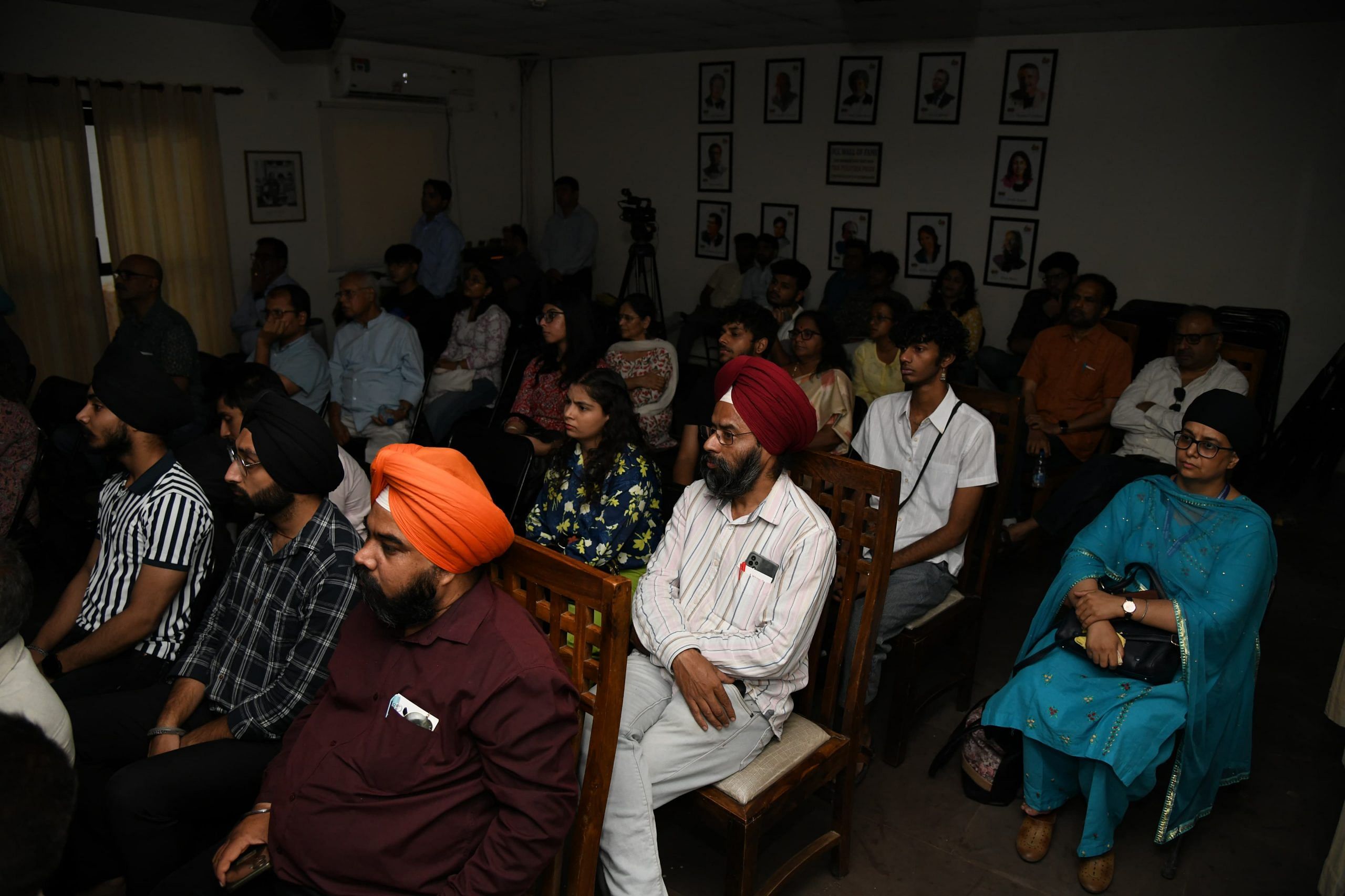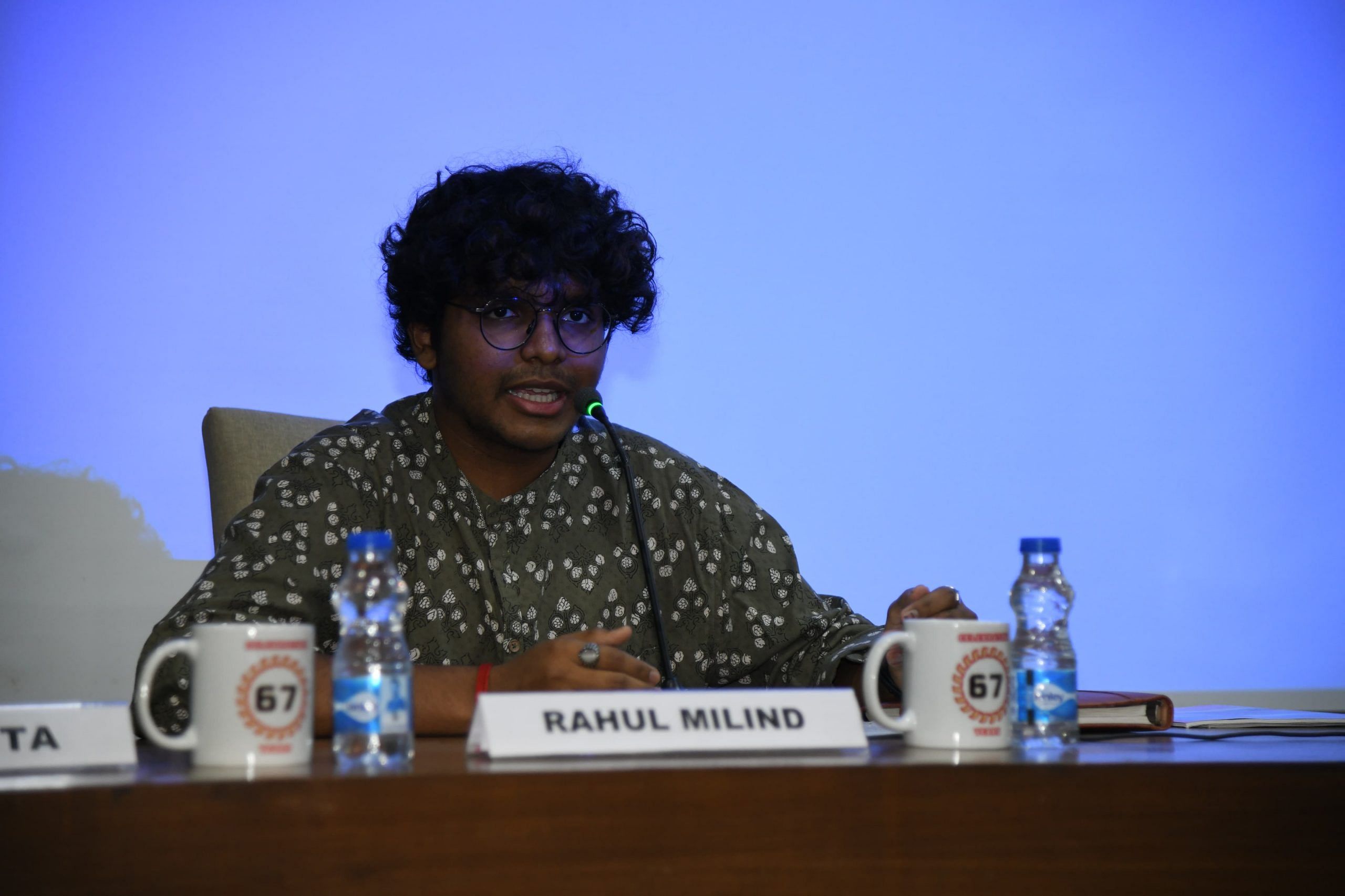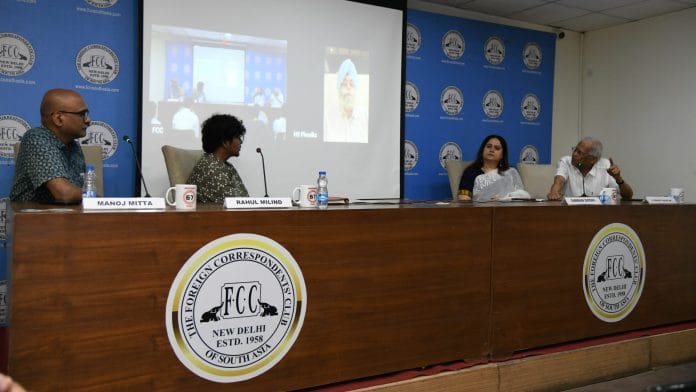New Delhi: Genocide, massacre, ethnic cleansing—these powerful terms are often interchangeably used on social media, especially for the ongoing carnage in Gaza. As sensitivity slips through the gaps of social media activism, a young filmmaker from Hyderabad has reopened a dark chapter of Indian history in search of an appropriate description for the anti-Sikh violence of 1984.
Rahul Milind’s first documentary, The Winter that Burned Delhi: Silent Screams and Broken Promises of 1984, focuses on the tragedy of November 1984 in Delhi, questioning Indians’ collective memory and the official narrative of the events.
On 14 June, the Foreign Correspondents Club (FCC) of South Asia hosted about 50 people, young and old, many of whom belonged to the Sikh community. The audience members could not only relate to the documentary but also recall the events as they happened.
The screening was followed by a panel discussion featuring authors Manoj Mitta and advocate HS Phoolka, journalist Simran Sodhi, and the head of FCC South Asia, S Venkat Narayan.

Also read: Congress was involved in 1984 anti-Sikh riots – I saw & reported it
A name for 1984
“How does one go about naming a violence?” asks Milind in his documentary, which he had filmed as his thesis project under the supervision of Prof Prithvi Datta Chandra Shobhi and Prof Ramachandra Guha. Though the 1984 massacre is widely known as ‘anti-Sikh riots’, the term ‘riots’ does immense disservice to its survivors.
“The image it [riots] would evoke is a clash between two communities when what happened was an absolutely one-sided violence,” said Mitta, who co-authored the 2007 book, When a Tree Shook Delhi: The 1984 Carnage and Its Aftermath, with Phoolka.
Mitta referred to the persistent dispute over calling the 2002 Gujarat incident a ‘genocide’, pointing out how no such debate exists for 1984.
“In ’84, the violence was on a much larger scale, more than double the death toll of Gujarat,” Mitta said.
Phoolka talked about Sikligars, a community of Sikhs in Kalyanpuri who had been making weapons since the time of the Gurus and had a tradition of keeping a weapon at home.
“DCP Sewa Dass (then-DCP of East Delhi) goes and seizes all the 25 guns and arrests 25 people,” said Phoolka. Within the next few hours, he added, all those arrested were killed. He concluded that the events of 1984 were undoubtedly state-sponsored and could be called ‘genocide’.
Milind, instead of offering his opinion, pointed to the term used by the people he interviewed. “Most of the victims I have met used the word qatl-e-aam (mass killing),” he told ThePrint, also adding how the Hindi word for riots, dange, was not often used.

The Urdu word qatl-e-aam can mean genocide, massacre, or pogrom; there isn’t an English equivalent for it. The language used by the 1984 survivors to describe their experiences doesn’t yield easily to English.
Complicating the narrative of one-sided violence, Mitta said that “Sikhs did fight back” in some cases.
“We don’t call ourselves victims,” a girl from New Delhi’s ‘Widow Colony’ says in the film. “We call ourselves martyrs because we sacrificed our lives for our community.”
In the documentary, the camera pans over the portrait-covered walls of the only gurdwara in Trilokpuri Block 23, where the killings were largely concentrated. The photos belong to the men who were killed, many of them young boys, some younger than 15.
Also read: How Tihar jailers protected Sikh inmates after Indira Gandhi’s assassination
Haunted by 1984
The effects of the violence are long-lasting. In the film, the survivors struggle to articulate the effect it had on them.
“My eldest son’s confidence broke,” says a woman from the ‘Widow Colony’, sharing seeing their fathers and grandfathers being killed scarred the children who survived 1984.
The education of an entire generation of Sikhs came to a standstill. This led to many being unemployed and falling into drug abuse and depression.
The screening moved the audience. Several Sikh elders thanked Milind for voicing their pain and honouring their history. They also appealed to the attendees, especially the media, to henceforth describe the 1984 violence as ‘genocide’ instead of ‘riots’.
During the panel discussion, an audience member interrupted Mitta’s talk, asking him to clearly state what word he would use for 1984. He struggled to answer and instead addressed different aspects of defining a massacre as genocide.
“Legally, the bar is very high,” Mitta said. “You will have to establish that there was an intent to destroy that community.”
Mitta’s reluctance to specify 1984 shows even a mountain of evidence may not be enough to name a violence that has witnessed four decades of legal inaction.
(Edited by Aamaan Alam Khan)






